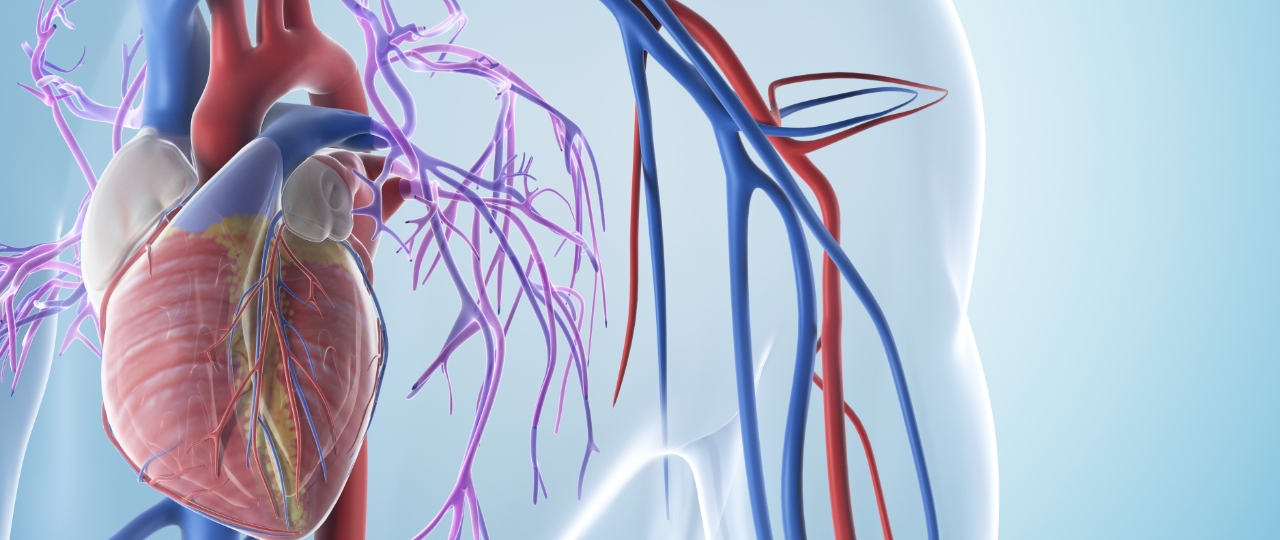Presbyterian Heart & Vascular Care Providers
Our team of highly skilled doctors and clinicians offers a full range of heart-related services from diagnosis and treatment to monitoring.

We have a highly skilled team who can provide a wide range of services from diagnosis to treatment.
Coronary artery bypass grafting (or CABG) surgery is performed to bypass a blocked coronary artery. This restores normal blood flow to the heart muscle by creating a detour with another blood vessel for blood flow past the blockage. The graft may come from a patient’s own artery usually from the chest or arm or their own vein from their leg.
This procedure helps relieve symptoms of coronary artery disease, including angina (or chest pain). It lowers the patient’s risk of a heart attack and allows the patient to resume a normal lifestyle and daily living activities.
Presbyterian has a team of skilled surgeons who are using some of the most advanced techniques to perform this procedure including off pump (beating heart) CABG. This can allow the patient to have a faster recovery, less complications and a quicker return to work and other daily activities.
Patients who have been recommended by their doctor to undergo this procedure may have been diagnosed with angina (chest pain), shortness of breath, or other cardiac symptoms. Patients eligible for CABG have been diagnosed with multivessel (3 or more) coronary artery disease or blockages that are not treatable with coronary angioplasty or stents. Your healthcare team will decide whether or not this procedure will be helpful for you based on your symptoms and diagnosis.
Conditions and symptoms treated by CABG include:
Your doctor will give you specific instructions about activity restrictions and changes in your diet or medications that you should make before surgery. You will be asked to take a series of showers with special soap and to avoid eating or drinking for about 8 hours prior to surgery.
Make arrangements for assistance after your surgery. It will take about four to six weeks to recover to the point where you can drive again, return to work and perform daily tasks.
CABG generally takes between three to six hours.
For general anesthesia, a breathing tube is inserted through your mouth. This tube attaches to a ventilator, which breaths for you during the surgery.
The surgeon cuts down the center of the chest along the breastbone and spreads open the rib cage to expose the heart. After the chest is opened, the heart is temporarily stopped with medication, and a heart-lung machine takes over your blood circulation.
The surgeon takes a section of a healthy blood vessel, often an artery from the inside of the chest wall or vein from the leg and attaches the ends to the aorta and past the blocked or narrowed artery. Now blood flow can get past the blockage (stenosis) and the heart muscle gets the blood flow it needs.
After completing the grafts, the surgeon will restore your heartbeat, disconnect you from the heart-lung machine, unless your CABG was done without the “pump” (off pump) and use wire to close your chest bone. The stainless-steel wire will remain in your body. It is MRI safe. The muscles, tissues, and skin of your chest will be closed with absorbable suture.
You will be transferred to the cardiac ICU on a ventilator. You will be extubated (breathing tube removed) within a few hours. You will have IVs for medication, monitoring, and fluids. You will have chest tubes to drain fluids from inside your chest and temporary pacing wires. It is important that you get out of bed and walk as soon as possible. This helps your lungs, your GI system, your overall strength to recover quickly from surgery.
Cardiac rehabilitation often begins while you're still in the hospital. You'll be given an exercise and education program designed to help you recover.
Typically, you'll be discharged from the hospital within a week.
You might have difficulty doing everyday tasks or walking a short distance for a while. If you have any of the following signs or symptoms, call your doctor:
Expect a recovery period of about six weeks. If you have your doctor's OK, you can return to work, begin driving, exercising, and resume sexual activity after four to six weeks.
After surgery, most people feel better and might remain symptom-free for as long as 15 or more years. Over time, however, it's possible that other arteries will become blocked, requiring another CABG. CABG only treats the existing coronary artery disease (CAD), not future disease. That is up to you. You can reduce your risk of CAD by exercising, not smoking, avoiding a high fat diet, and avoiding stress. There are also several medications that will reduce your risk.
Our team of highly skilled doctors and clinicians offers a full range of heart-related services from diagnosis and treatment to monitoring.